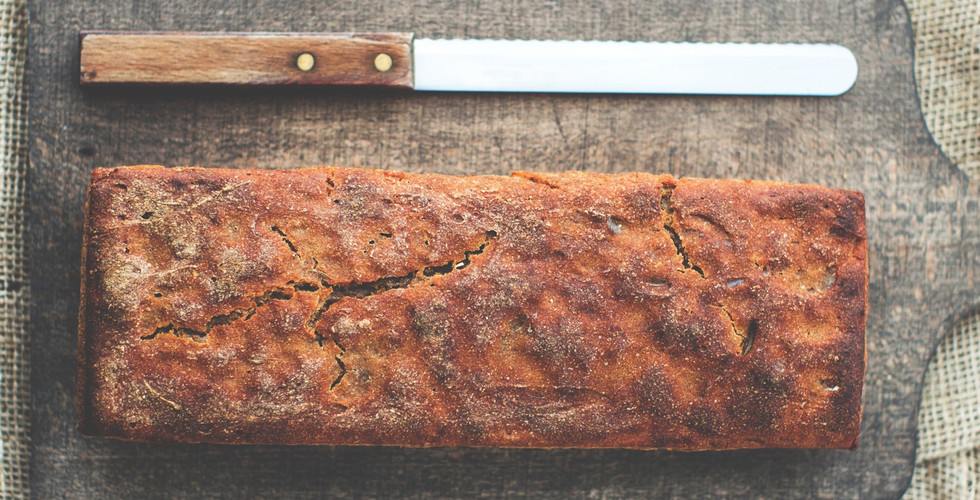I am a child of the 80’s. We had milk in glass bottles left at our front door, loaves of white bread adorned our tables, No mobile phones, and playing outside was as natural as... well... playing outside.
Little thought was given to the nutritional value of the food on our plates. Bread, milk, chocolate, cereal. It was all fair game. Why? Well, going on in the background was one of the biggest and most insidious marketing campaigns since “smoking was good for you”. Yes, we’re talking about the USA’s (and subsequently the world’s) - attack on fat. Closely followed by the push for carbohydrates.
This crusade of lies still lingers despite science not just crushing the notion, but proving that natural, in particular saturated fat, is and always has been good for us. But on a more sneaky and subtle note, there has also been another strange phenomenon nipping at the heels of nutrition advise and throw away dietary guidance. Something that we still vehemently argue to the hilt, despite most people not having the slightest clue what this is. What are we referring to? Yep. Fibre.
Ask any plastic dietician (that’s everyone these days), and you’ll be met with “of course fibre is good for you“. Why?
“Well, it’s in things like fruit and vegetables so therefore, we must need it like we need protein“. Ummm actually, this isn’t strictly true, and it’s about time we lifted the lid on this mysterious nutrient.
What is fibre?
Fibre is a carbohydrate, and as most of us are now aware - there is no such thing as an essential carbohydrate. Your body, therefore, doesn’t require fibre for normal function; unlike vitamins, minerals, fatty acids and amino acids.
“So why are there hundreds of packets of food in the supermarket shouting at me that there’s fibre in the food”?
It’s weird isn’t it.
Well, fibre helps your body push through the stuff it doesn’t want and make sure it ends up in the toilet. That’s it. It ALL ends up in the toilet. Soluble, insoluble, it doesn’t matter.
Guess what foods have the highest levels of fibre? cereal, processed and refined foods. Basically, ‘food’ that tastes horrible so they have to add industrial amounts of sugar and fibre, so your body doesn’t clog up. Fruit also contains a lot of fibre - alongside it’s high fructose content. Fructose, by the way, gets transported into cells differently to glucose and turned into fat by the liver.
What have we been told about fibre?
Some of the benefits that have been presented are:
a) Slows the absorption of glucose and improve insulin sensitivity.
- this is only true when it’s relative to consuming refined grains, but not relative to sources of protein and dairy (meat, fish, eggs, dairy).
Outcome: Low-carb alternatives are better for glucose absorption and insulin sensitivity.
b) Fibre lowers cholesterol.
- Fibre in of itself doesn’t lower cholesterol, but many foods that contain fibre and plant sterols do. It is dangerous to place fibre as the prime source to lower cholesterol, particularly as our knowledge evolves and we now understand that cholesterol is not the villain so often portrayed In main stream media.
Outcome: Lowering carbohydrate consumption and exercising regularly are far superior than increasing your intake of a non-essential nutrient.
c) Fibre promotes weight loss.
- There are no studies that confirm fibre helps with losing weight. One study showed that eating an apple, rather than apple juice, resulted in reduced weight loss (duh).
Outcome: Studies have shown the opposite: foods marketed as high in fibre (cereal and grain products) increase weight and visceral fat stores.
Science
There are no randomised control tests showing fibre is needed for good health.
There is no Cochrane evidence showing fibre is good for us.
There is a lot of evidence that suggests the food industry wants us to eat more fibre as it is heavily marketed in cereal, bread and many other processed and refined foods.
Fibre per sè is not a bad guy. We’re not out to slate it’s character and ruin it’s chances of running for office. But the claims that it solves all your problems and ‘coincidentally’ accompanies a lot of foods that are horrific for our health does not help it’s reputation.
Of course, it is in many fruits and vegetables, but that doesn’t mean it’s great by association. Animal sources have more micronutrients and do not contain (or perhaps need) the same levels of fibre.
If our body hangs on to a food source (e.g. Meat) for longer to absorb all its nutrients, and gets rid of other foods (e.g. Melon) very quickly, does that not tell us it’s preferred fuel?
So what are the good guys?
Nuts, seeds, green leafy veg, and berries are all great sources of fibre, but more importantly, are low carb and highly nutritious.
As a diabetic, we’re running a fine line between what’s good for us and what negatively impacts our blood sugars. Learning about nutrition and testing our blood sugars on foods that are ‘supposed’ to be good for us but actually kick us straight in the pancreas gives us all the information we need.
Trust your gut... literally.
Nathan
Believe the hypo
www.believethehypo.com







Hello thanks for posting this